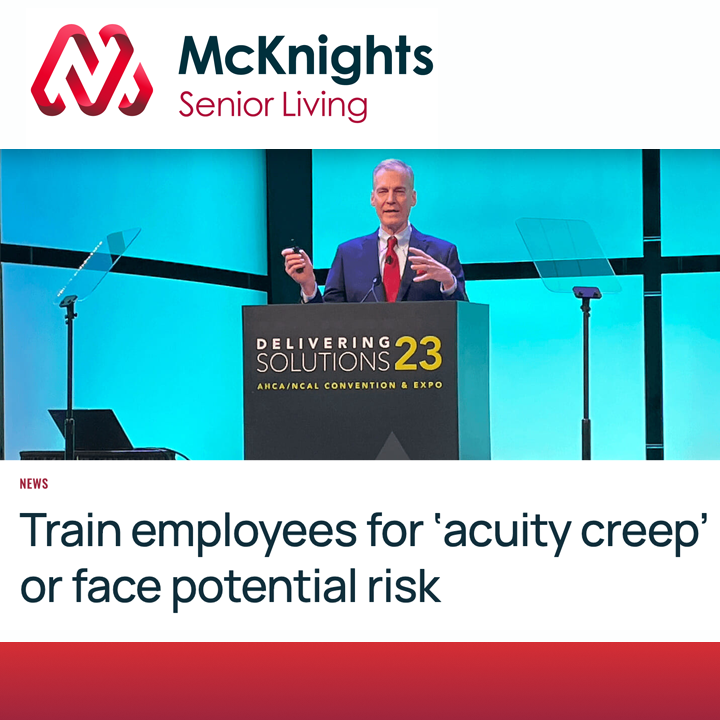
Amanda Johnson, RN, Lifespark, VP Senior Living Operations, shared her insights during a panel discussion at the ACHA/NCAL conference on how training employees plays a critical role in addressing ‘acuity creep’ for today’s residents moving into senior living .
Quoted in McKnights Senior Living, Amanda noted that the top consideration for operators is deciding what services and care they are willing to provide. Assisted living providers, she said, often are expected to be able to offer everything. The problem, however, is that few payment models support higher levels of staff certification and care delivery. Johnson added that certified nursing assistants aren’t necessarily recognized as a component in assisted living, meaning that care delivery is delegated to the lowest level of trained staff members. That makes staff training even more important.
Preparing staff members for an influx of residents with greater health needs will be important and should include training about chronic diseases, memory care and cognitive decline, Johnson said. Setting expectations with residents and families at move-in also can ease the burdens on staff members, she added.
Also weighing on this important topic is Lisa Zeis, Lifespark Senior Living Senior Director, Quality & Experience who said, “assisted living providers are becoming a bigger part of the healthcare continuum. Assisted living is going to be a big player in how the payment model will change over the next few years.”



